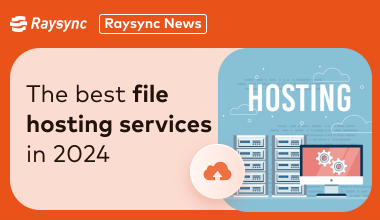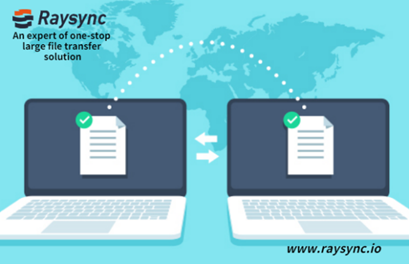Best 6 Automatic File Transfer Solution in 2024
Automatic file transfer is a term used to describe the movement of file programs. Usually, within an organization or between trading partners, automated business processes are used for file-based system-to-system transfers. Companies often use file transfer automation software to replace old scripts or unreliable manual processes. This can reduce support overhead and error rates, thereby increasing efficiency. Here are 6 best automatic file transfer solutions, I hope it can be helpful to you.

1. SFTP Client
The easiest and cheapest option is to configure automation using a desktop SFTP client application. Its price is around 50 pounds, although it is cheap, it does have risks. It is not server-based, which means it relies on powered-on desktops and running applications. If you are dealing with complex workflows, then this is not an option.
2. Workflow Automation
If you only need to automate the movement of data without the (new) server to place the files, then a workflow automation tool is a good choice. The automation engine is a subset of the hosted file transfer below, which can move files between file servers, FTP servers, and cloud storage through a variety of value-added functions.
3. Managed File Transfer—MFT
MFT usually, this includes server components not included above. Hosted file transfer solutions provide multiple delivery options to meet most automation needs. SFTP automation is one of the most common use cases, but many other delivery protocols are also suitable for automation.
4. Robotic Process Automation—RPA
RPA provides file transfer automation is just the tip of the iceberg of RPA. Where file-based applications are insufficient, RPA supports integration with application GUI or web pages. Configure through the "demonstration" to the RPA tool, and then adopt the provided rules and automatically execute 24×7 without errors.
5. Integrated Platform Service—IPaaS
iPaaS is a set of automation tools used to connect software applications deployed in different environments. iPaaS is usually used to integrate applications and data between the local and cloud. In batch file transfers, this type of solution is usually not strong. Sometimes additional components are needed to enter data into the platform.
6. Large File Transfer—Raysync
The Raysync solution is dedicated to meeting the data transmission needs of the enterprise or with external partners, providing efficient and controllable accelerated transmission of large files, ultra-long distance, transnational network data transmission, safe distribution of file assets, file management and organizational authority management. Supports local deployment and cloud services, and provides enterprises with safe, stable, efficient and convenient large file interactive technical support and services.
To Sum Up
There are multiple file transfer automation software options, which can realize safe and automatic file transfer. The best choice for your business depends on your requirements, budget, and risk appetite.
You might also like

Raysync News
January 18, 2024Recommendations for the best file hosting services in 2024
File hosting services are vital for businesses. In this article, we will explore the importance of file hosting services and present six top-notch file hosting software options to help businesses find the right file hosting tool.

Raysync News
December 22, 2023What are the Requirements for Secure File Transfer 2024?
Secure file transfer is when files are transferred using a security protocol to secure that communication channel. This is incredibly important in corporate environments because organizations are regularly handling personal and sensitive data.
Raysync News
November 20, 2022Join our FREE Webinar NOW!
Raysync is designed with a new data access technology to make sure that the upload speed for your small file transfers can reach up to 4,981 files per second and a download speed of 5293 files per second!!